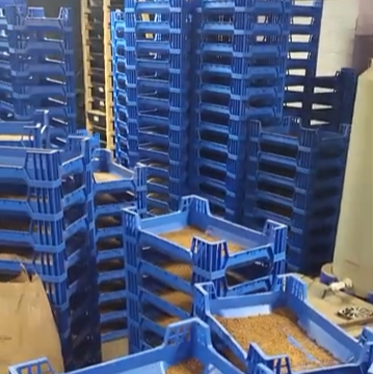Have you ever wondered what it takes to breed Black Soldier Fly Larvae (BSFL)? In the world of sustainable agriculture and waste management, BSFL are like unsung heroes. They have the incredible ability to convert organic waste into high-quality protein and fat, making them an invaluable asset for composting and animal feed.
Breeding Black Soldier Fly Larvae (BSFL) involves setting up a warm, humid environment (27°C to 30°C and 60%-70% humidity), providing organic waste as feed, and ensuring proper ventilation. Start with a container filled with food waste for the larvae. Adult flies lay eggs near food sources. Once hatched, larvae feed voraciously on the organic matter. After 2-4 weeks, they mature and self-harvest as they seek a dry place to pupate. Maintain cleanliness and monitor moisture levels to prevent odor and promote healthy growth.
Maintaining interest in BSFL breeding is not just for scientists or farmers; it’s becoming a popular hobby and a business opportunity for many.

Why Breed Black Soldier Fly Larvae?
The importance of BSFL in waste management and as a protein source cannot be overstated. They are efficient organic waste processors, transforming scraps into valuable biomass.
But, how exactly do you start breeding these creatures? And what makes them so effective at waste management?
Setting Up the Breeding Environment
First and foremost, creating the right environment is crucial. Black Soldier Flies prefer warm temperatures and high humidity. A temperature range of 27°C to 30°C (80°F to 86°F) is ideal for their growth and reproduction. Humidity levels should be maintained at around 60% to 70%.
To start, you’ll need a container or a bin where the larvae can grow and feed. This can be as simple as a plastic tub with ventilation holes.
What Do Black Soldier Fly Larvae Eat?
BSFL are not picky eaters. They thrive on a diet of organic waste, including fruits, vegetables, coffee grounds, and even meat scraps. However, it’s essential to maintain a balance in their diet to ensure they receive all the necessary nutrients.
For a successful breeding operation, consistently add fresh waste to the bin every few days. Avoid overfeeding, as this can lead to odor problems and unhealthy larvae.

Breeding and Lifecycle Management
The lifecycle of a Black Soldier Fly is fascinating. They progress from eggs to larvae, then pupae, and finally emerge as flies. The key to a successful breeding operation is managing each stage effectively.
Females lay eggs in crevices or on surfaces close to food sources. Providing cardboard or wood shavings can encourage egg-laying.
Harvesting Your Black Soldier Fly Larvae
Harvesting BSFL at the right time is crucial. You want to collect them before they turn into pupae. This stage is typically reached after about 14 to 18 days of larval growth.
The larvae are self-harvesting; as they reach maturity, they will crawl out of the feeding bin in search of a place to pupate. Setting up a ramp or a collection bucket can help you harvest them efficiently.
Potential Challenges and Solutions
Like any farming activity, breeding BSFL comes with its set of challenges. Managing the smell, ensuring the right moisture levels, and preventing the escape of mature flies are common concerns.
Addressing these challenges requires vigilance and a bit of creativity. For instance, covering your bins with a breathable fabric can help contain the flies while allowing for ventilation.
Why is BSFL breeding important for the future?
The benefits of BSFL breeding extend beyond waste management. They offer a sustainable source of animal feed, reduce greenhouse gas emissions from organic waste, and can even contribute to soil health as a byproduct of their processing.
In a world searching for sustainable solutions, breeding BSFL could be a key piece of the puzzle. By understanding and harnessing the power of these remarkable creatures, we can take significant strides towards a more sustainable future.
Conclusion
Breeding Black Soldier Fly Larvae is an adventure worth exploring. Whether you’re interested in sustainable agriculture, waste management, or simply looking for a unique hobby, BSFL breeding offers numerous rewards. With patience and care, you can contribute to a greener planet while reaping the benefits of these incredible creatures.



